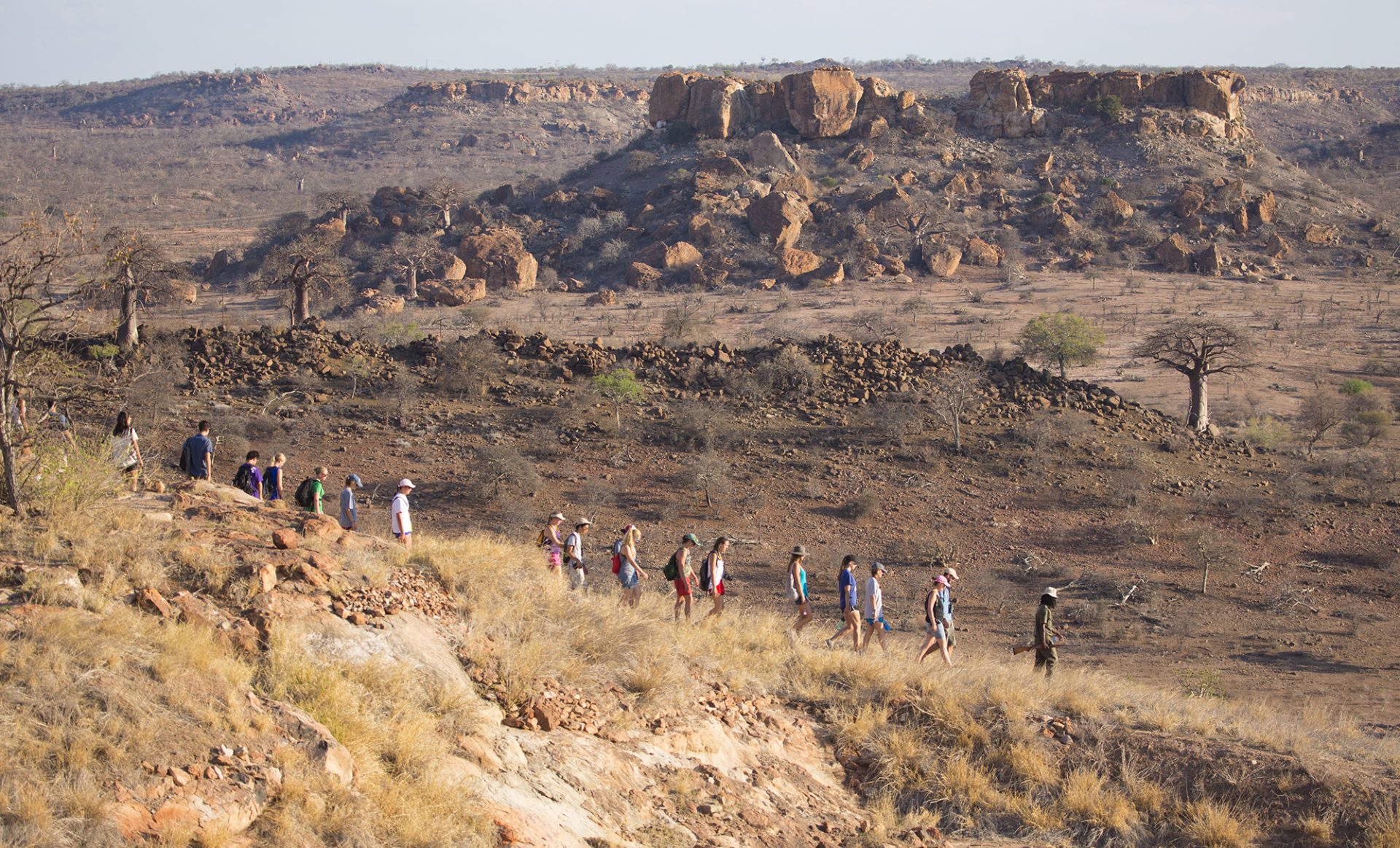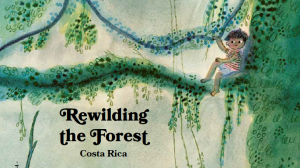1. Dr. Álvaro Umaña featured in new book by Emily Hawkins
Dr. Alvaro Umaña (Treasurer of the OTS Board of Directors) is featured in a new book for children, ages 5-8, Rewild the World at Bedtime, written by Emily Hawkins and illustrated by Ella Beech. The story speaks of the love of trees by a young Alvaro, his distress to witness habitat destruction, and his determination to find nature-based solutions to protect Costa Rica’s environment.
2.Bolaños’ Web-footed Salamander
An endemic species from the subalpine páramo of southeastern Costa Rica was recently described and named in honor of herpetologist, evolutionary biologist, and long-term OTS friend Dr. Federico Bolaños, University of Costa Rica.
(Arias et al. 2023, Amphibian & Reptile Conservation 17(1 & 2): 143–160 (e327). https://bit.ly/ARC_17_1-2)
3.Invasive fishes negatively impact ghost frog tadpole abundance in Western Cape, South Africa
A recent paper by OTS instructor Josephine Pegg and colleagues investigated the role of invasive salmonid fish on the native ghost frogs of this region. Tadpole abundance decreased by 18 times in the presence of the invasive fish species. The authors also investigated environmental variables with effects on tadpoles, finding that these also affect tadpole abundance. They suggest that both environmental and non-native species effects should be considered in making management decisions.
(D. van Blerk et al. 2023. BioInvasions Records 12(4): 1121–1138. https://doi.org/10.3391/bir.2023.12.4.24)
4. Nematodes colonize ephemeral resource patches in neotropical forests
Few published studies investigate the natural history and ecology of biology’s model species. Sloat et al. (2022) used field experiments and large-scale collections to investigate species composition, abundance, and colonization efficiency of Caenorhabditis species in two of the world’s best-studied lowland tropical field sites, Barro Colorado Island in Panamá and OTS’ La Selva Research Station in Sarapiquí, Costa Rica. Seven Caenorhabditis species were documented in the study, four of which are known only from these collections. The authors formally describe two species and place them within the Caenorhabditis phylogeny. The faunas of both BCI and LSRS were dominated by two widely distributed species. One striking finding was that individual roundworms were able to colonize baits accessible only through phoresy and preferentially colonized baits in direct contact with the ground.
(SA Sloat et al. 2022. Ecology and Evolution, 12,e9124. https://doi.org/10.1002/ece3.9124)
5. Howler monkey population increased over thirty years at La Selva
C.E. Johnson and coauthors compared detections of howler monkey dawn chorus calls from a 1992 publication to one conducted using the same methods in 2022. The later census detected 25 groups, compared to 15 in the earlier study. The authors suggest several possible reasons for the apparent increase, including a possible recovery from a mid-twentieth-century yellow fever epidemic, or in-migration due to fragmentation of the surrounding forests, and suggest that these findings may offer a concrete example of the value of connecting habitat fragments to improve the ability of wildlife to move between forests.
(CE Johnson et al. 2023. International Journal of Primatology. https://doi.org/10.1007/s10764-023-00409-z)
6. Large herbivorous mammals affect seedling communities in human-modified Costa Rican forests
Through conducting experiments that prevented access to plots by large mammalian herbivores (“exclosure experiments”) at OTS’ La Selva and in the surrounding region, Huanca-Nuñez and co-authors determined that animals such as peccaries affected survival of seedlings, and that the magnitude of these effects depended on both the forest stage (primary versus secondary) and the degree of forest protection at the landscape level. Over two years, the activities of herbivores (such as feeding, rooting, and trampling) resulted in significant shifts in community composition, as seedling communities inside and outside the exclosures diverged. Access by animals was associated with lower density and higher species diversity of seedlings outside exclosures. The authors suggest that these results can help guide restoration efforts by incorporating species interactions into the planning process.
(N Huanca-Nuñez et al. 2023. J Appl Ecol. 2023;00:1–12.https://doi.org/10.1111/1365-2664.14531)
7. Fer-de-lance ecology and natural history
The terciopelo (Bothrops asper) inhabits a wide range of environmental conditions and habitats across Central America. Ramirez-Arce and coauthors documented the habitat use and age structure of the B. asper population in the Quebrada Gonzalez sector of Braulio Carrillo National Park, Costa Rica, from data collected in 2015 to 2017. Fifty-five individuals were captured, mostly females and juveniles, with five recaptures. Snakes were most often encountered in early succession forests with dense vegetation cover and high prey availability. Snakes selected areas with heavy understory cover when resting and more exposed sites, often closer to bodies of water, when ambushing prey or moving. Interestingly, sites that were disturbed by human activity were used less than undisturbed sites.
(DG Ramírez-Arce et al. 2021. Herpetological Journal. https://doi.org/10.33256/31.1.4654)
8. Sensor networks for studying tropical rainforest ecosystems
Rundel et al. (2023) published a commentary on the challenges and lessons learned from the sensor networks established at La Selva with funding from the U.S. NSF in 2008. This program involved integrated networks of diverse sensors on a series of canopy towers linked to multiple belowground soil sensor arrays that could transport data streams from the forest directly to an offsite location via a fiber optic cable. The authors reviewed the challenges inherent in three aspects of the research over two decades: (1) using canopy towers to study the transfer (or “flux”) of carbon dioxide between the biosphere and the atmosphere, (2) using soil sensor arrays to measure spatial and temporal patterns of CO2 and O2 fluxes between the soil and the atmosphere, and (3) investigating the ecosystem impact of leaf-cutter ants on carbon fluxes. The most difficult challenges over two decades have involved maintaining and stabilizing the sensor and tower infrastructure due to climate-related events, such as abundant precipitation, high winds, and treefalls. Despite the challenges, the authors make the case for using sensor networks such as the La Selva array to study complex ecosystem processes.
(PW Rundel et al. (2023). Sensors 2023, 23, 9081. https://doi.org/10.3390/s23229081)


